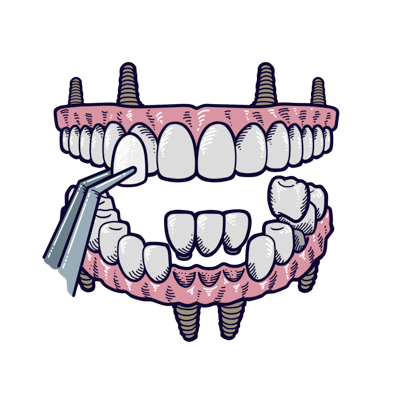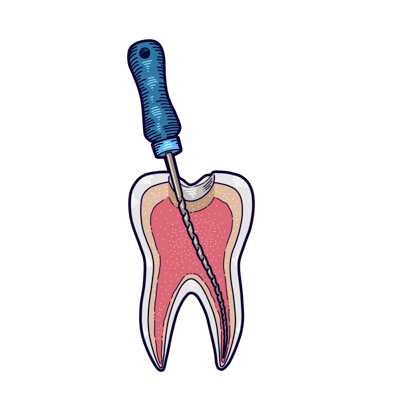Price of
BONE GRAFTING IN ALL ON 4 DENTAL IMPLANT PROCEDURES

Try our Cost & Smile Simulator
from the comfort of your own home.
100% Free. 100% Confidential.


What Is a Bone Graft?

Why Is Bone Grafting Needed for All on 4 Dental Implants?
Key Reasons Why Bone Grafting May Be Needed for All on 4
Types of Bone Grafts Used in All on 4 Procedures
The type of bone graft used in All on 4 procedures varies based on the patient’s bone quality, health status, and specific needs. Below are the most commonly used grafting options.
1. Autograft (Autogenous Bone Grafts)
Definition: Bone harvested from the patient’s own body, typically from the chin, jaw, or, in more severe cases, the hip.
8 Advantages: High success rate due to complete biocompatibility. It is the gold standard for All on 4 patients needing significant bone regeneration.
Disadvantages: Requires an additional surgical site, leading to increased discomfort and recovery time.2. Allograft
Definition: Bone sourced from a human donor, usually provided through regulated tissue banks.
Advantages: No need for a second surgical site; readily available and highly processed for safety.
Disadvantages: Slightly lower integration rate compared to autografts.3. Xenograft
Definition: Bone material derived from animal sources, typically bovine (cow) bone.
5 Advantages: Excellent structural stability and widely used in sinus lift procedures.
Disadvantages: Potential for slower bone integration compared to human bone grafts.


Try our online Cost & Smile Simulator from the comfort of your own home.
100% Free. 100% Confidential.
How Does Bone Grafting Impact
All on 4 Treatment?
Bone grafting plays a critical role in the overall success of the All on 4 procedure. While the All on 4 technique is designed to minimize the need for extensive bone grafting by angling the posterior implants to utilize the densest part of the jaw, some patients still require grafting to provide adequate bone support.
Impacts of Bone Grafting
on All on 4
1. Treatment Timeline: Grafting typically extends the overall treatment timeline. Patients may need to wait 3-6 months for the bone to fully integrate before implants can be placed.
2. Procedure Complexity: In cases of severe bone loss, advanced grafting techniques such as block grafts or sinus lifts may be required, adding to the complexity.
3. Price Implications: Bone grafting increases the total price of All on 4, though in Mexico, the savings can still be substantial compared to the USA and Canada.
4. Surgical Considerations: Certain grafting techniques may require additional surgical sites, especially when using autografts, which may affect recovery.
Price of Bone Grafts in Mexico for
All on 4 Patients
Mexico is a popular destination for All on 4 patients requiring bone grafts due to its cost-effectiveness. While prices vary depending on the clinic and specific requirements, average prices for bone grafts in Mexico are as follows.

Minor Bone Graft (Per Site) $250 USD to $500 USD
Major Bone Graft (Block Graft) $750 USD to $1,500 USD
Sinus Lift Procedure $1,200 USD to $2,500 USD
Patients opting for All on 4 with bone grafting in Mexico can expect overall savings of 50-70% compared to prices in the USA or Canada.7
Comparing Bone Graft Prices:
Mexico vs. USA and Canada
Choosing Mexico for All on 4 procedures with bone grafting can save patients thousands of dollars while maintaining high-quality outcomes.
| Procedure | Mexico | USA | Canada |
|---|---|---|---|
| Single Tooth Implant | $1,400 USD | $3,500 USD | $4,000 USD |
| All-on-4 (Per Arch) | $9,000 USD | $25,000 USD | $27,000 USD |
| Full Mouth Restoration | $20,000 USD | $60,000 USD | $65,000 USD |
What to Expect During the Healing Process
The healing process after bone grafting varies depending on the size of the graft and individual healing factors. Below are some common experiences and what to expect:
Initial Recovery (First 2 Weeks)
- Swelling and mild discomfort are common.
- Avoid strenuous activities and follow dietary recommendations.
- Maintain excellent oral hygiene to prevent infection.
Integration Period (3 to 6 Months)
- During this period, the graft will integrate with the natural bone.
- Avoid placing pressure on the grafted area.
- Regular check-ups will be scheduled to monitor healing.
Final Evaluation Before Implant Placement
- Once integration is confirmed via X-rays, the All on 4 implant surgery can be scheduled.

Is Bone Grafting Always Necessary for
All on 4 Implants?
Not every patient needs bone grafting for All on 4. The need is determined by the amount of existing bone and the strategic positioning of the implants. While the All on 4 procedure can often bypass the need for extensive grafting by using angulated implants, patients with severe bone loss or large anatomical defects may still require grafting to achieve the best results.
Factors That Influence the Need for Bone Grafting.
- Extent of Bone Loss: Severe atrophy may necessitate grafting.
- Location of Bone Deficiency: Grafting is often needed in the upper jaw near the sinus or in areas with thin bone.
- Patient’s Health Status: Conditions such as diabetes or osteoporosis can impact bone quality and the need for grafting.
Bone Grafting Procedure for All on 4 Patients:
Step-by-Step Guide
The bone grafting process for All on 4 patients is a multi-phase procedure that requires precision and expertise. This section outlines each step in detail, covering the initial consultation to the final implant placement.
- During the first visit, the dental surgeon conducts a thorough clinical evaluation, which includes a comprehensive dental examination, review of the patient’s medical history, and diagnostic imaging.
- Imaging Tests: X-rays and 3D CBCT (Cone Beam Computed Tomography) scans are crucial at this stage. These scans provide detailed visuals of the bone structure, revealing areas of bone loss and allowing the surgeon to measure bone density.
- Bone Density Evaluation: Adequate bone density is necessary for stable implant placement. If the bone is found to be deficient, the surgeon will recommend a suitable grafting procedure based on the specific areas needing augmentation.
- Treatment Planning: A customized treatment plan is developed. If bone grafting is needed, the type of graft and the grafting site will be identified, and the timeline for the procedure will be established.
- Before the bone grafting procedure, any existing oral health issues, such as cavities or gum disease, must be treated. This ensures a healthy environment for the graft to integrate successfully.
- Medication Protocols: Patients may be prescribed antibiotics or anti-inflammatory medication to reduce the risk of infection.
- Smoking Cessation: Smokers are advised to quit, as smoking can impede the healing process and negatively impact graft success.
- The bone grafting surgery it self will vary depending on the type of graft being used. Below is a detailed breakdown of common bone grafting procedures used for All on 4 patients:
- Indication: Used when only a small amount of bone is needed to increase the height or width of the jaw.
- Procedure: The surgeon makes a small incision in the gum tissue, exposing the bone. The graft material (autograft, allograft, or alloplast) is then applied to the deficient area and secured with a membrane.
- Healing Time: 3 to 4 months.
- Indication: Recommended for patients with severe bone loss requiring significant bone volume addition.
- Procedure: A small block of bone is harvested from another site (usually the chin or ramus of the jaw) and placed in the area of deficiency. The block is then fixed in place with titanium screws, and a membrane is used to protect the graft.
- Healing Time: 6 to 9 months.
- Indication: Required when there is insufficient bone height in the upper jaw, specifically in the molar and premolar region.
- Procedure: A small opening is made in the bone near the sinus cavity. The sinus membrane is gently lifted, and the graft material is placed underneath to elevate the sinus floor, creating more bone height.
- Healing Time: 6 to 9 months.
- Medication: Pain management is typically achieved with over-the-counter pain relievers, and patients are often given antibiotics to prevent infection.
- Diet: A soft-food diet is recommended for the first few days, along with avoidance of chewing on the grafted area.
- Swelling Management: Applying ice packs can reduce swelling in the first 48 hours.
- Follow-Up Visits: Regular follow-up appointments are scheduled to monitor the healing progress. During these visits, the surgeon will check for signs of graft integration and ensure that the site remains free of infection.
Once the graft has fully healed and integrated with the existing bone, the All on 4 implant placement can begin. The timing for this phase will depend on the type of graft used and the patient’s healing response.
- Implant Surgery: Four titanium implants are placed strategically in the jaw to maximize stability. The posterior implants are angled to utilize the densest part of the bone, reducing the need for additional grafting in many cases.
- Immediate Load Prosthesis (Optional): In some cases, a temporary prosthesis can be attached on the same day as implant placement, depending on the primary stability of the implants.
Frequently Asked Questions About Bone Grafting and All on 4
Can All on 4 be performed without bone grafting?
- Answer: Yes, in many cases, All on 4 can be done without bone grafting by utilizing longer implants and angling them to take advantage of the available bone. However, for patients with severe bone loss, bone grafting may still be necessary.
How long is the overall treatment time for All on 4 with bone grafting?
- Answer: When bone grafting is involved, the overall treatment time can range from 6 months to over a year. The graft must fully integrate before the All on 4 implants are placed, adding additional healing time.
Is bone grafting for All on 4 painful?
- Answer: The procedure itself is performed under local anesthesia or IV sedation, so the patient will not feel pain during surgery. Post-operatively, discomfort is usually mild and can be managed with prescribed medications.
How does bone grafting improve the success of All on 4 implants?
- Answer: Adequate bone volume ensures that each of the four implants has a strong, stable base. This prevents implant movement and reduces the risk of implant failure, ultimately leading to a longer-lasting prosthesis.
What is the success rate of bone grafting for All on 4 patients?
- Answer: Bone grafting for All on 4 procedures has a high success rate, typically over 90%. Factors that influence success include the patient’s overall health, the surgeon’s expertise, and post-operative care.
Key Considerations for Traveling to Mexico for Bone Grafting and All on 4 Implants


Conclusion
Bone grafting is a vital component in ensuring the success of All on 4 dental implants, particularly for patients with insufficient bone volume. With proper planning, high-quality care, and adherence to post-operative instructions, bone grafting can provide a stable foundation for All on 4 implants, delivering long-term stability and improved oral function. By choosing SOTA Dental Mexico for your bone grafting and All on 4 needs, you can achieve excellent results at a fraction of the price, all while receiving professional, patient-centered care.
References
- MedicinePlus: Bone graft: MedlinePlus Medical Encyclopedia
- JOMS: A decision tree for bone graft success – Journal of Oral and Maxillofacial Surgery
- Healthline: Can You Get Dental Implants If You Have Osteoporosis?
- Healthline: What You Need To Know About A Dental Bone Graft
- ScienceDirect: Animal-bone derived hydroxyapatite in biomedical applications – ScienceDirect
- Healthline: Bone Graft: Purpose, Procedure, and Risks
- CostHelper: How Much Does a Dental Bone Graft Cost? – CostHelper
- UMMS: Dental Procedures | University of Maryland Medical Center
- Visalogy: Visa Requirements for American Passport Holders – Travel Information for American Citizens




















